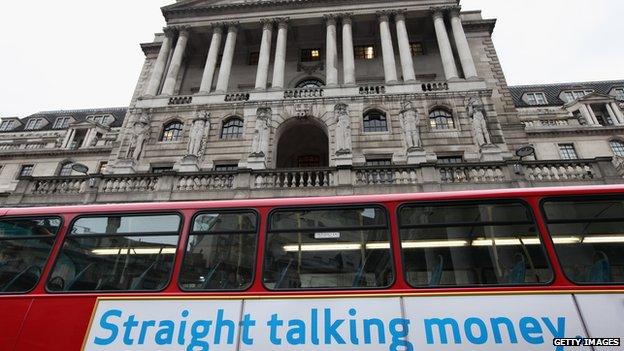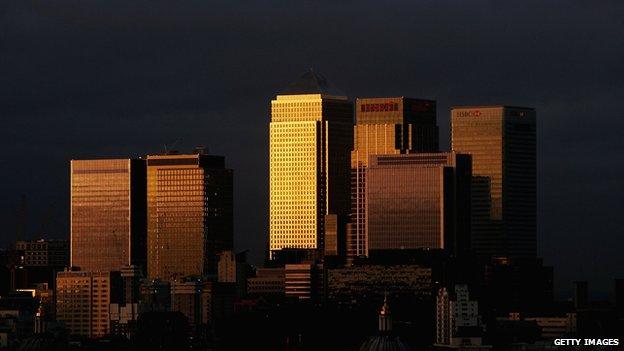How low can interest rates go?
- Published

Bank of England might could "cut Bank Rate further towards zero"
The Bank of England's website says that the "effective lower bound" for the interest rate it sets, Bank Rate, is the current rate of 0.5%.
This is the level, according to the Bank, "below which it cannot be set" - the lowest practicable official interest rate.
But on this important issue the website is behind the thinking of the Bank of England's Monetary Policy Committee, which sets Bank Rate as its main tool to keep inflation on target.
Because just over a month ago, the Bank's governor said that if low inflation were to begin to depress expectations of inflation and wage growth, the MPC could "cut Bank Rate further towards zero".
And with inflation well below the 2% target at zero, the Bank's chief economist, Andy Haldane, has said - as a personal rather than institutional view - that there is a meaningful chance that Bank Rate will be cut.
Less than zero
So what has happened to demonstrate to the Bank that 0.5% is not the practicable minimum?
Partly it is the example of central banks - the European Central Bank and those of Switzerland, Sweden and Denmark - whose official rates are negative: banks that place funds with them are having interest deducted from their deposits, rather than receiving interest.
Their rates are less than zero.

The closer Bank Rate gets to zero the bigger the squeeze on banks
The other contributor to the fall in the effective lower bound is the recovery of Britain's banks.
This matters because the nearer Bank Rate approaches zero, the bigger the squeeze on the profits banks earn from borrowing and lending.
Think of it this way. Competition between banks should bring down the interest rate on loans when Bank Rate is cut towards zero. But savings rates would be kept by competition above zero.
So the gap between the interest rate paid and received by banks would narrow: the profits on this most basic of banking activities would fall.
Also the windfall received by banks from all those interest-free deposits the banks hold would be significantly cut.
Bank strength
The thing is that in March 2009 when Bank Rate was reduced to its record low of 0.5%, the Bank of England figured banks needed to rebuild their capital and strength by generating a certain level of profit on lending and borrowing.
So it matters that Mark Carney now reckons the banks can cope with the profit squeeze that would come from a reduction in Bank Rate.
That said, if the Monetary Policy Committee were to decide that a Bank Rate cut is necessary, the Bank could not be confident that all banks and building societies would sail on untroubled.
Small uncomplicated banks and building societies, very reliant on borrowing and lending rather than fees and revenue from other activities, might not look desperately viable.
Which carries an important industrial implication.
If the worst happened - deflation and prolonged economic stagnation - which necessitated years of zero or negative interest rates, it is difficult to see how the British tradition of "free" in-credit banking could survive (though proper deflation would have much more serious consequences than that).